Text to Pay Available Now

This user-friendly service is a safe and secure way to send payments. It allows customers to pay for their service without needing to be at the office to process payments. Try it out next time you visit Tommy’s Automotive!

This user-friendly service is a safe and secure way to send payments. It allows customers to pay for their service without needing to be at the office to process payments. Try it out next time you visit Tommy’s Automotive!
Antique cars hold a special meaning to their owners. Their doors hold memories of a lifetime and keeping the vehicle in perfect shape is necessary.
We recently received a call to replace a radiator for a 1957 Chevrolet Bel Air. After a few hours, we were able to return this beautiful blue car to its owners. We are excited that we were given the opportunity to work on such a unique car. Check it out:
Most haven’t been using their car as much due to COVID-19, making this the best time to get your car serviced. Cars that have been sitting for some time may experience problems starting, with the tires, fluids, and more. We will ensure your car is in safe conditions for any of your commutes with our preventative maintenance.
We’ve been keeping busy the past few months at Tommy’s Automotive.
We recently had a 6.0 L Diesel Ford Truck come into our shop that needed a new head gasket. We tackled this project by lifting up only half of the truck. This allowed for easy access to the head gasket, making this a speedy job.
We were excited to have this red Dodge Charger come into our shop! When we were finished with this speed bullet, it ran as good as new.
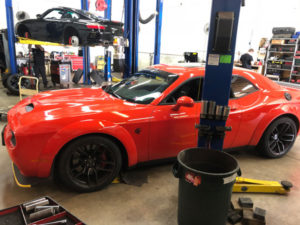
Preventative maintenance can help prevent any costly repairs down the road. If you’re interested in scheduling a maintenance check for your car, contact us today!
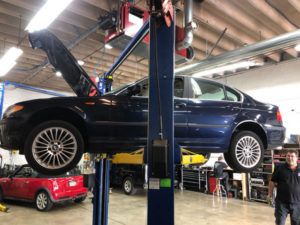
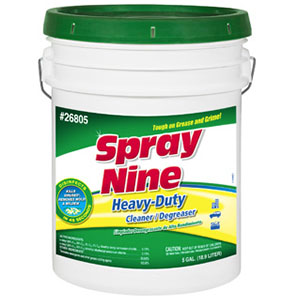
We are taking extra care to keep everything in our shop clean and germ-free. We use a product called Spray Nine, a heavy-duty cleaner, degreaser, and disinfectant, which is pictured.
Our waiting room is not open, so you will need to arrange transportation to and from the shop while we work on your vehicle.
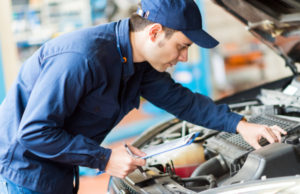
Since Tommy’s is an Official PA Inspection station, we’re familiar with the process of having a vehicle inspected. This is usually the process we follow when we complete inspections.
We’ll look at your license plate and make sure it’s fastened onto your vehicle securely and is easily visible. To prevent visibility issues and risk of further damage, we’ll take a close look at your windows and windshield to ensure there aren’t any cracks or chips. We’ll do a test of your doors, windows, and wiper blades to make sure they’re functioning safely. We’ll also make sure your turn signals, headlights, taillights, and any other exterior lights don’t need to be replaced. Lastly, we’ll check your bumpers for stability.
An important part of the inspection is checking your steering wheel. We want to make sure your wheels will turn and that your steering wheel and column are in good condition–we call this part checking the alignment. We’ll check your seatbelts, press your horn to make sure it’s working, and then do a thorough inspection of your brakes. Your brake pads, brake pedal, and parking brake all need to be in working order for your car to pass inspection. You can learn more about our brake repair services here.
During this phase of the inspection, we’ll pop your hood to see what’s going on underneath. We’ll look over your exhaust, transmission, fuel, battery, and coolant systems to ensure that there is no leaking or signs of damage. This is also when we check your emissions system.
Now, we head underneath your vehicle to check the chassis. We’ll take a look at your shocks, coil springs, axels, and frame to ensure they’re free of wear and damage. We’ll do a final check of your brakes and exhaust system.
The last part of the process is the tires. We’ll check the tread and the depth and look for signs of wear. We’ll ensure there aren’t punctures or other damage. And if your tires need to be fixed, we will be able to take care of that in our shop.
Before your car officially passes inspection, we’ll take it for a test drive.
You can click here to learn more about PennDot’s regulations.
Contact us today to schedule your vehicle inspection!
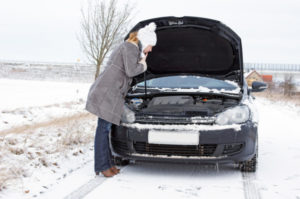
1. Oil
Your vehicle is a complex machine that is made up of several different parts; oil lubricates the parts found in your engine. Over time, the oil in your car becomes dirty, which makes your car work twice as hard to operate smoothly. To ensure your car receives clean oil, you should get your oil changed every 3 months or 3,000 miles.
In fact, changing to a different oil all together may be necessary. When temperatures drop in the winter, your car requires a thinner oil to operate effectively. Thicker oils can harm your engine because the viscosity makes your oil pump overwork to reach all the parts it needs to lubricate the engine.
We all travel at some point during the holidays and car maintenance may be the furthest thing from our minds, but it is important to remember. If your car continues to run on dirty oil, you may be asking Santa for an expensive engine cleaning!
2. Anti-Freeze
Anti-freeze is a genius liquid that keeps your engine’s cooling system running. In colder temperatures, your cooling system is vulnerable. However, if you add this substance, you could be saving your car from serious radiator damage.
Make sure to purchase a ready-mix version, also known as an engine coolant. Be careful when purchasing a concentrated form. This variety means you will have to do some diluting; you want your system to carry 50% water and 50% antifreeze.
Check with your mechanic about your car’s requirements! Manufacturers may have different recommendations depending on the make, model, and year of your car.
3. Brake Fluid
Brake fluid matters because this is what keeps you safe on the road! It is required by law that you pass a brake test, but in extreme weather conditions, you will want to make sure your brakes are in tip-top shape.
A mechanic can easily assess your brake fluid for you. If your fluid levels are below the lower marking indicated on your brake fluid reservoir, this could mean your brakes are worn or leaking.
Don’t take a chance this season! High functioning brakes become particularly important during unpredictable winters.
4. Automatic Transmission Fluid
Like oil, transmission fluid keeps all the bells and whistles in your car running appropriately. Generally, you should change your transmission fluid every 30,000 miles. Some cars have sealed transmissions, which means a professional will have to refill this for you.
5. Windshield Wiper
Worn wipers are the worst, especially during inclement weather! Your wiper fluid reservoir requires two blends throughout the year: a summer blend and a winter blend. It’s imperative to make this switch; if not, your windshield fluid will freeze to your windshield in temperatures below 32 degrees.
Is it time to visit us for a check-up? Contact us to schedule an appointment today.

A: Long car trips for summer vacation can really turn nasty if your vehicle breaks down. We have compiled a short list of things to check out before you take that long-awaited trip to the shore.
If for some reason you are not taking your car or truck to Tommy’s Automotive on Carter Drive in West Chester, you can ask your mechanic to check for the following.
Spring finally arrived in West Chester, and now we’re enjoying these summer days we missed so much during the cold months.
This season, we had an old school low-rider in our shop. The kind that’s rigged to move up and down. You can see the before and after photos below.
In May, some of our friends at Harley Davidson of Chester Springs had some issues with a Vanderhall. Fixing it was definitely a head-scratcher, but we were able to get it sorted out and returned to the owner.
We took apart the steering wheel of Jesse’s Mercedes to fix some wiring issues. That ended up being more challenging than we anticipated.
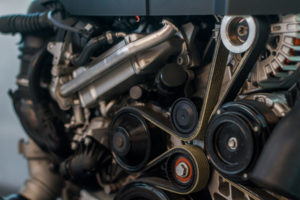
Hoses in your engine are designed to keep the engine cool. This is a pretty important job, but as hoses get older, they can leak or deteriorate. A faulty hose is a very easy (and inexpensive) fix, and if it is left alone, it can result in much more serious and expensive repairs to the engine.
Belts do a lot of different jobs within the engine. As with hoses, belts start to deteriorate over time (especially with cold temperatures) and can fray or even snap. If a belt snaps while you are out on the road, the only way to get the car moving again is a tow truck. Avoid the problem altogether and simply have your belts checked regularly and replaced as necessary.
Contact us today and learn more about our other repair services.
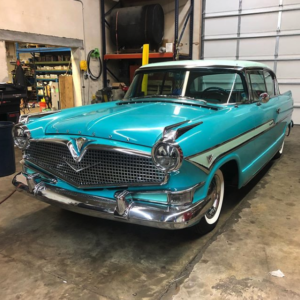
In March, we met a new friend, Utah, who was adopted from the Brandywine Valley SPCA. He has already become an indispensable part of our team. In December, we got to do burnouts in an old rusty truck!
We saw no shortage of cool cars in the shop this winter, including a GT R33, a 1957 Hudson Hornet, and Jesse’s BMW E60.
As part of our job search promotion (we’re hiring!), Peyton shook one of her toys in a manic frenzy to show her excitement.